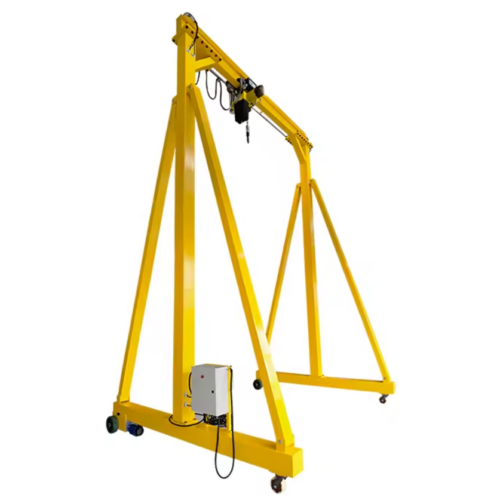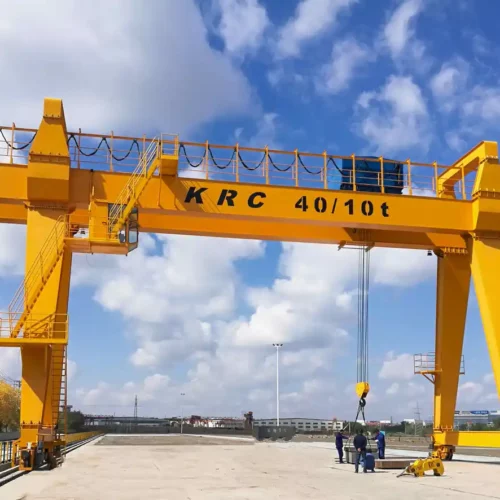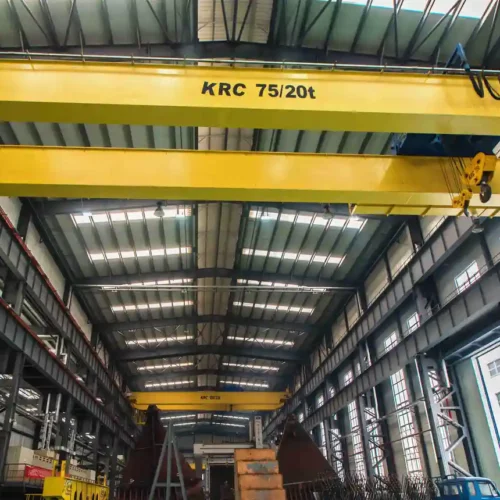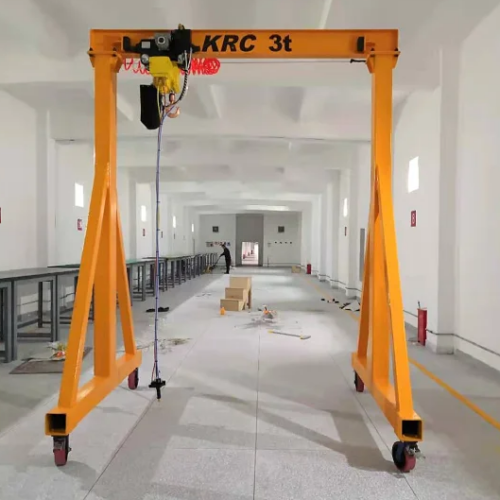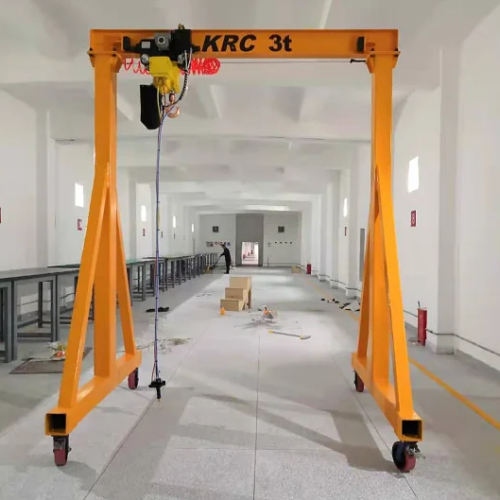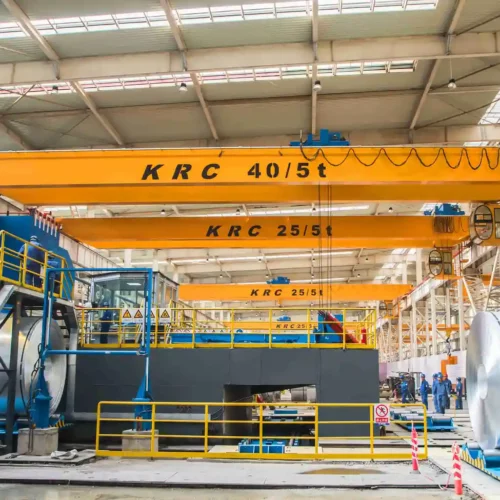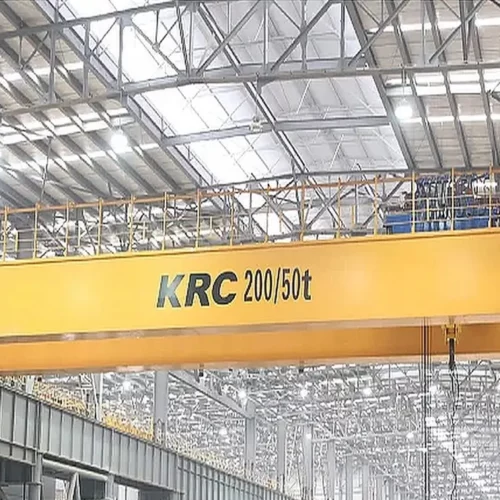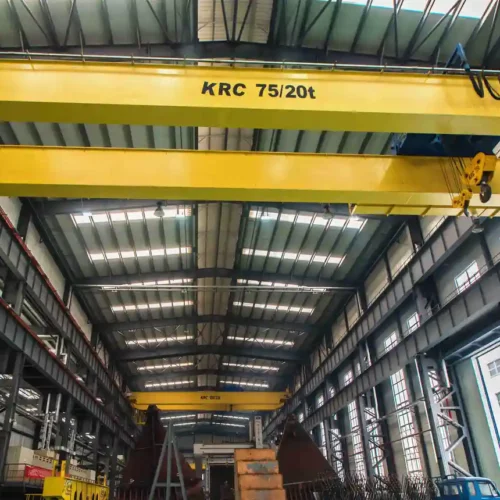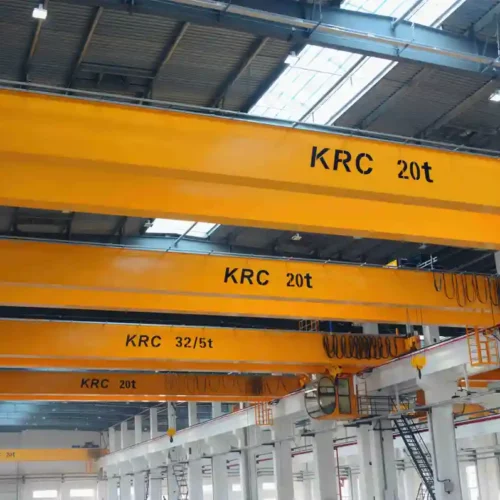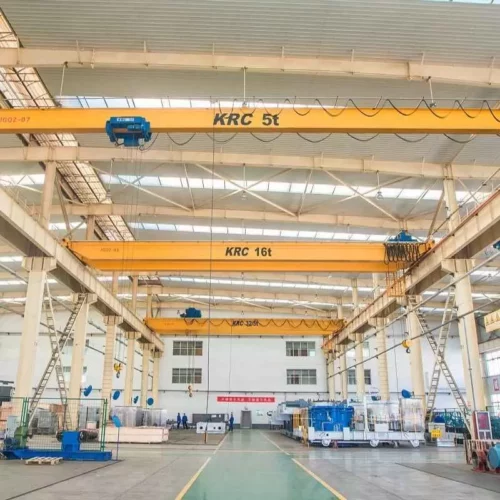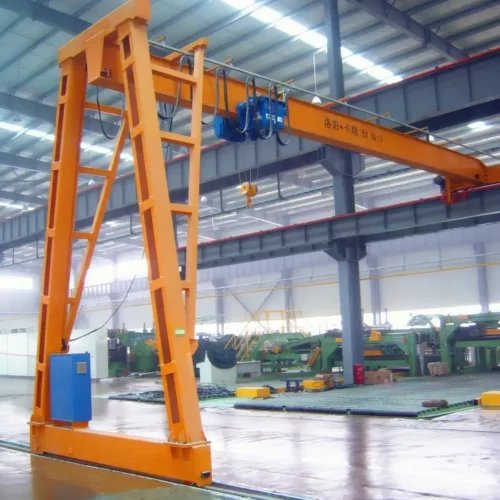Gantry cranes are large, versatile cranes used primarily for lifting heavy loads in various settings such as shipping yards, railroads, and manufacturing facilities. These cranes are characterized by their gantry-like structure, where the bridge is supported by two or more legs moving on ground-level rails. Here’s a detailed look at the capacity product categories of gantry cranes.
Full Gantry Cranes: These cranes feature legs that ride on a rail system installed at ground level. They are robust and can handle very heavy loads, with capacities typically ranging from 10 tons to several hundred tons. They are ideal for outdoor applications where heavy materials need to be moved over large distances.
Semi-Gantry Cranes: A hybrid between a gantry and an overhead crane, semi-gantry cranes have one side of the bridge running along an elevated rail while the other side moves on a rail at the ground level. These cranes are useful in facilities where space is limited. Their capacities can vary from a few tons to about 50 tons.
Portable Gantry Cranes: Designed to be mobile and easy to assemble, portable gantry cranes are used in workshops and warehouses for tasks that require flexibility. They typically support smaller loads, ranging from 1 ton to 10 tons, making them ideal for light-duty lifting.
Adjustable Gantry Cranes: These cranes offer adjustable heights and/or spans to accommodate different lifting needs and workspaces. Like portable gantry cranes, they usually have lower capacities, generally up to 10 tons.
Rail Mounted Gantry Cranes (RMG): Specifically used in railroad terminals and container yards, RMGs move on tracks, allowing them to stack and move heavy containers efficiently. Their capacities are high, usually ranging from 30 tons to over 100 tons.
Rubber Tired Gantry Cranes (RTG): Similar to RMGs but mounted on rubber tires instead of rails, RTGs offer more flexibility in movement and are primarily used in large outdoor storage yards. They can handle similar loads to RMGs, usually around 20 to 50 tons, but can vary based on specific designs and requirements.
Each category is designed to meet specific operational requirements, making gantry cranes a diverse and essential tool in heavy-duty lifting and material handling industries.
Gantry cranes are categorized by their lifting capacity, measured in tons, which directly relates to the weight they can safely lift. These categories are crucial for determining the appropriate crane for specific applications, ensuring both safety and efficiency. Here's a breakdown of typical gantry crane capacities:
Light-Duty Gantry Cranes (1 to 10 Tons):
Use: Ideal for workshops, garages, and small manufacturing facilities where space might be limited and lifting requirements are relatively low.
Features: Often portable or adjustable; these cranes can be easily moved and reconfigured to suit different tasks.
Medium-Duty Gantry Cranes (10 to 50 Tons):
Use: Common in manufacturing plants and large workshops for handling machine parts, engines, and other moderately heavy loads.
Features: These cranes offer a good balance between mobility and capacity, with options for semi-gantry configurations to maximize workspace utility.
Heavy-Duty Gantry Cranes (50 to 100 Tons):
Use: Used in industries like metal production, heavy equipment manufacturing, and shipbuilding where large, heavy loads are the norm.
Features: Typically full gantry cranes with robust structures and often custom-designed for specific operational needs.
Extra-Heavy-Duty Gantry Cranes (Over 100 Tons):
Use: Essential in major industrial applications such as container handling, large-scale construction projects, and heavy cargo operations.
Features: Often include specialized designs like Rail Mounted Gantries (RMG) or Rubber Tired Gantries (RTG) to handle very heavy loads efficiently.
These categories help in choosing the right gantry crane based on operational needs, space constraints, and load requirements, ensuring operational efficiency and safety in heavy lifting tasks.

